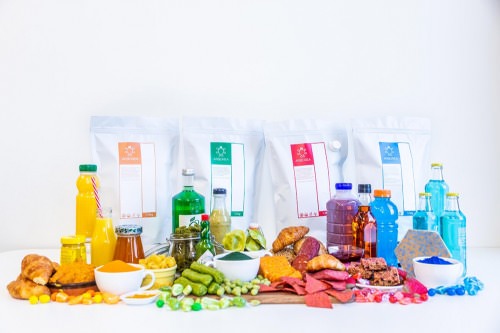Technical Article - July 13, 2022
Alternative proteins and how they could challenge the food-system status-quo


Written by Expert: Rouyu Wu 6 min read
Rouyu Wu is committed to connecting clean technologies to markets for a sustainable future and started to volunteer for Solar Impulse Foundation in 2020. She is currently Director of Innovation and Investment at Dao Foods Inc., an early stage investor and incubator with a focus on China's alternative protein industry to support the invested companies and incubator operations in innovation, finance, investment and financing, and industry activities.
Providing the growing population with sufficient high-quality nutrition is an urgent task. Food systems account for 23-42% of global greenhouse gas emissions and animal-based foods are considered as the largest contributors. On the other hand, food insecurity and malnutrition remain widespread with more than 188 million children under the age of 5 either too short for their age or too thin for their height. Dietary changes toward more sustainable food can mitigate climate change, bring health benefits, and support the SDGs as called for in the latest IPCC Sixth Assessment Report. Part of this shift can be supported by the development of alternative protein products.
The three main pillars of alternative protein technology
Alternative protein products are those that replicate the sensory experience and nutritional benefits of eating food of animal origin. Products range from dairy, eggs, meat to fish and seafood. Product formats are diverse, including but not limited to fresh products, 3R (ready-to-eat, ready-to-heat, and ready-to-cook) products, functional foods, snack foods to animal-derived commercial or household food ingredients and additives. Different products and applications require different innovations and technological developments. Overall, the three main pillars of alternative protein technology are recognized in this nascent but fast-growing sector as plant-based proteins, microbial fermentation-derived proteins and cell cultivated proteins.
Plant-based proteins
Plant ingredients are sourced from crops and processed through mechanical, chemical, or biological ways to replace functional or nutritional compounds in the animal products, such as proteins, lipids, fibers, and more. Crop development, ingredient optimization, and formulation and manufacture of the end product, are the three general stages where R&D is played.
Soybeans, peas, rice, wheat, mung beans are more commonly used as raw materials due to their nutritional, functional, and, processing characteristics. Scientists and entrepreneurs are seeking novel protein sources in the plant kingdom, such as fava beans, duckweed, and rapeseeds. Sustainable Planet Ltd’s superhero ingredient, water lentil protein, is one of these highly anticipated novel ingredients. At the same time, a range of breeding techniques are resorted or under development, from conventional breeding methods to modern genetic engineering methods, to optimize the protein content, quality, and function of crops. For example, soybeans without inherent beany flavor can save downstream processing work and increase consumer acceptance.
Research and development also play a role once these crops have been produced. Plants are milled, extracted, and processed into purified and concentrated ingredient fractions, usually in two forms, protein concentrates or isolates. At this point, some plant proteins undergo even further processing such as hydrolysis to improve their functional properties for specific applications.
Finally, during the product formulation and manufacturing stage, water, oil, food binders, additives, flavorings and other formulations are added to reconstituted base ingredients to achieve desired texture and sensory attributes. Afterwards, the ingredient mixture is structured and shaped into end products by a variety of methods, such as stretching, press forming, folding, layering, extrusion, 3D printing, and more. Garden Gourmet’s plant-based 3R food products, including burgers, sausages, and many more are available for consumers to get a taste.
Microbial fermentation-derived proteins
Humans have a long history of using fermentation technology. Fermentation is the production process of whole-cell biomass or valuable fractions thereof based on the growth of any microbial species in a controlled environment. Fermentation is highly anticipated due to its ability to produce food in an ultra-efficient manner. There are three types of fermentation that are used in the alternative protein sector: traditional fermentation, biomass fermentation, and precision fermentation.
Some of our favorite foods like wine, beer, bread, and yogurt, are based on traditional fermentation. The use of active microorganisms of natural origin, such as yeast, on raw materials such as flour dough gives unique organoleptic and nutritional properties to the resulting products. The Indonesian traditional food, tempeh, is one great example. Beans are fermented by the fungus Rhizopus and compressed into dense, chewy cakes with a meaty texture. It is now a trendy vegan meat alternative. Although the process used for biomass fermentation is similar to traditional fermentation, it relies on proliferating microorganisms that have high protein content themselves. Fungi and algae are two types of microorganisms commonly used in biomass fermentation. In this microbial wave, Noblegen’ Euglena gracilis-based protein and Alver’s Chlorella-based protein are not behind. Apart from the other two methods, precision fermentation use microorganisms as cell factories to produce target molecules. During the process, a DNA fragment of the target molecule is inserted into a host microorganism. Yeast, bacteria, microalgae, or fungi, is chosen depending on which suits best for the target molecule. Precision fermentation is not new in biopharma industry. Synthetic insulin is the first product out of this production method. Highly expected by the food industry, it can be used to make proteins, fat, flavorings, vitamins, coloring pigments, and more.
 Image by Chokniti Khongchum from Pixabay
Image by Chokniti Khongchum from PixabayAs microorganisms play a key role in fermentation, strain development tops the priority for innovation. It is estimated that more than 99% of the trillions of microorganisms on Earth have yet to be discovered. High-throughput screening method, advanced genetic engineering, and machine learning are some of the promising technologies in this field. Substrate optimization and bioprocess design are other key innovation priorities. They are closely related to cost and scalability. Companies utilize agro-food byproducts like okara as fermentation substrates. It not only reduces the cost of purchasing feedstock, but also creates a circular economy. Arborea’s BioSolar Leaf is a membrane-driven breathing-bioreactor® technology that enables a hyper-efficient gas transfer and temperature control while maintaining optimal growth conditions for microalgae cultivation.
Cell cultivated proteins
This method relies on stem cells being harvested from a biopsy of the target animal and then developed into reproducible cell lines ready for proliferation. Cells are then grown at high densities and volumes in controlled bioreactors. Cells are fed a nutrient rich solution in order to proliferate and differentiate, subsequently forming muscle, fat, and connective tissue that make up meat
Cell line development, function optimization and cost reduction of growth media, and scaffolding technologies empowered by tissue engineering and material science are critical to the development of cell cultivated products.
Outlook of the alternative protein market
Global retail sales of plant-based meat and seafood substitutes (chilled, frozen, and shelf-stable) are estimated at $5.6 billion, up 17 percent from last year, according to Euromonitor and the Good Food Institute. Western Europe and North America are among the most mature regions, with sales of $2.6 billion and $2.1 billion, respectively. From the same source, the global meat market is estimated at $1.7 trillion. Plant-based meat (retail market) accounts for less than 0.5% of global consumption.
Market growth potential is huge. Although many market studies give different forecasts, there is a broadly consistent upward trend overall. Barclays predicts global meat substitute market could reach $140 billion in sales by 2029, while Ernst & Young estimates the total market size might reach $153 billion by 2030 and BCG predicts the market may even reach $290 billion by 2035.
Plant-based products dominate current alternative protein sales. Fermentation-derived products are at a relatively early stage of commercialization as biomass and precision fermentation practices require premarket authorization. When new strains are used for biomass fermentation, new food regulations apply. Some countries have adopted stricter regulations when it comes to genetic engineering methods (precision fermentation). For example, the Impossible Burger's heme is only legalized in the US, Canada, Hong Kong, Singapore, UAE, Australia and New Zealand. For cell-cultured products, Singapore remains the only country to date that has approved a cultured meat product for sale on the market. However, as cell culture products move closer to commercialization, countries are working to develop pathways for regulatory approval.
In addition to regulatory approvals, consumer acceptance is critical to the growth and scale of the alternative protein industry. The key to consumer acceptance is parity in price and quality. Innovation and technological development are the only ways to improve product quality and to reduce costs by accelerating production scale. One thing is certain, the foods on supermarket shelves will be very different in the next 5 to 10 years.
References
- https://globalnutritionreport.org/reports/2021-global-nutrition-report/
- https://www.fao.org/ag/againfo/themes/en/meat/home.html
- https://www.fao.org/3/cb5332en/Meat.pdf
- https://www.nytimes.com/2016/05/24/science/one-trillion-microbes-on-earth.html#:~:text=According%20to%20a%20new%20estimate,the%20number%20of%20insect%20species
- https://gfi.org/wp-content/uploads/2022/04/2021-Plant-Based-State-of-the-Industry-Report-1.pdf
- https://gfi.org/wp-content/uploads/2022/04/2021-Fermentation-State-of-the-Industry-Report.pdf
- https://gfi.org/wp-content/uploads/2022/04/2021-Cultivated-Meat-State-of-the-Industry-Report-1.pdf
- https://apps.who.int/iris/handle/10665/350965
- https://provegincubator.com/fermentation-a-quick-guide-for-alt-protein-fans/#:~:text=Biomass%20and%20precision%20fermentation,%2C%20flavour%20molecules%2C%20and%20pigments
- https://www.ipcc.ch/report/ar6/wg3/
- https://www.ey.com/en_us/food-system-reimagined/protein-reimagined-challenges-and-opportunities-in-the-alternative-meat-industry
- https://home.barclays/news/2021/05/the-future-of-food/
- https://www.bcg.com/press/23march2021-alternative-protein-market-reach-290-billion-by-2035

Written by Expert: Rouyu Wu on July 13, 2022





